 Facebook
Facebook
 X
X
 Instagram
Instagram
 TikTok
TikTok
 Youtube
Youtube
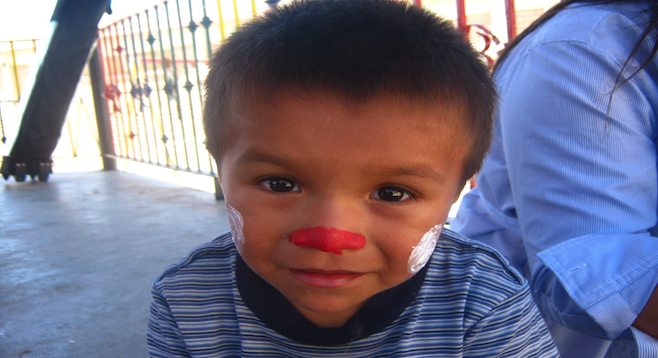
When I returned to San Diego from India, I felt a bit out of sorts. I had been profoundly moved by my experiences there – particularly seeing the numerous street kids and visiting the Salaam Baalak Trust orphanage. I’d seen poverty before, but not on that scale.
I felt a strong urge to head right back over there on the first plane and help out at SBT for several months. Alas, this was just not in the cards economically.
Eventually, I discovered an organization that arranges volunteer field trips from Los Angeles, Orange County and San Diego to orphanages in Tijuana. Corazon de Vida Foundation, a non-profit based in Irvine, is dedicated to supporting the kids in fifteen orphanages in Baja California. Participation on a day visit costs $50, which covers the cost of the visit, including lunch and a craft activity.
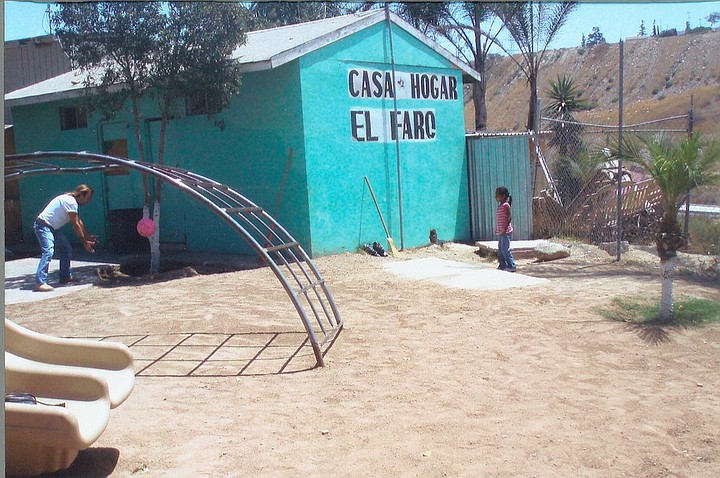
On a sunny Saturday morning, a bus of about 40 volunteers headed from Southern California to Baja, en route to the Casa Hogar El Faro orphanage (left) in a rundown neighborhood in Tijuana. This was to be the first of about a half dozen trips I would make over the next few years. Many of the faces I saw as I boarded the bus in Mission Bay would be the same ones I’d see on future trips. For some of the volunteers, the monthly trips are a regular part of their routine. I and several other volunteers also chipped in some much-needed toiletries.
We were joined on the trip by Hilda Pacheco-Taylor, a former resident of a Baja orphanage who founded Corazon de Vida in 1994. George Perez gave up a career in computer science about a decade ago to dedicate himself to playing a major role in running the organization. He has accompanied the volunteers on each of my visits and, as the bus rolled toward the border, gave an informative, pep-talky presentation orienting the newbie volunteers on what they could expect.
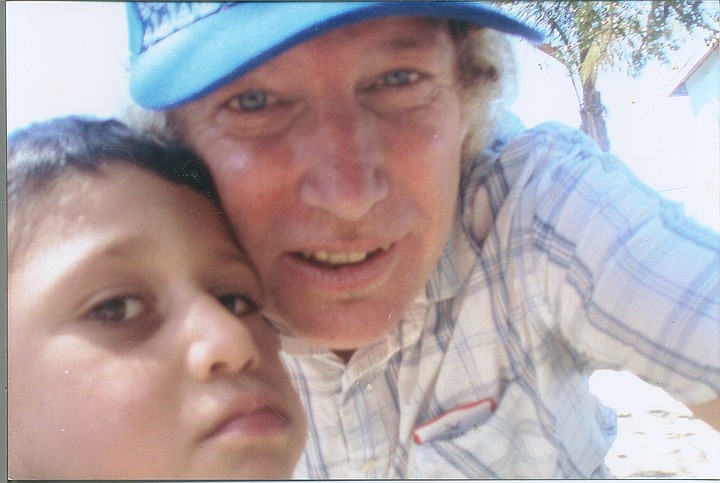
As we walked along a dusty field toward the El Faro orphanage and its 50 or so children, I noticed a little boy running up to me. He asked if I would give him a piggyback ride. We hung out for most of the remainder of the day playing catch and other games, coloring, and taking selfies. The kids performed a little skit, and there was cake to celebrate the birthday of one of the kids. Most of the kids spoke only Spanish and most of the volunteers only English, but this was not an issue. Smiles and laughter abounded.
I’ve enjoyed each of my subsequent five visits to the CDV orphanages; two of them were to El Faro and three were to another home, the Hacienda. Regardless of which orphanage you sign up to go to, the routine is similar: A craft is set up, perhaps coloring or an art project. Some of the children prefer an outdoors activity such as tossing a football or playing soccer. The kids on swings practice their English by pleading “push push.” You can also bring books (preferably in Spanish) and read to the kids. If you go to Hacienda, a soccer game will inevitably break out. Someone may sing or play the guitar.
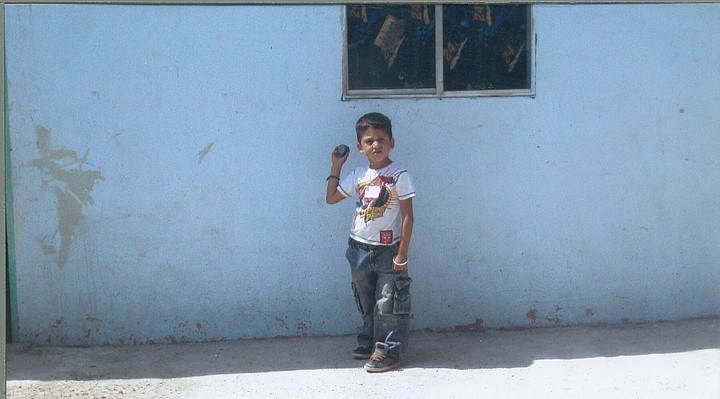
Mexico has no formal foster care system, and some of these children have been found living on the street. Many of them have parents but have been dropped off because of extreme hardship. The staff of three does its best, but is often overwhelmed dealing with such a large number of kids.
George offers a tour of the site for newcomers and demonstrates how Corazon de Vida plays a key role in providing the necessities of life to these children. According to Perez, the orphanage requires a minimum of $4,000 a month to sustain itself. Basic food costs are covered, but staff must scrounge and scrimp for funds for water, electricity, propane, medical, dental, housing repairs, education and daily emergencies. The Mexican government provides no support for these services, so they are entirely dependent on donor support. Corazon de Vida provides over $35,000 of support each month to the orphanages.
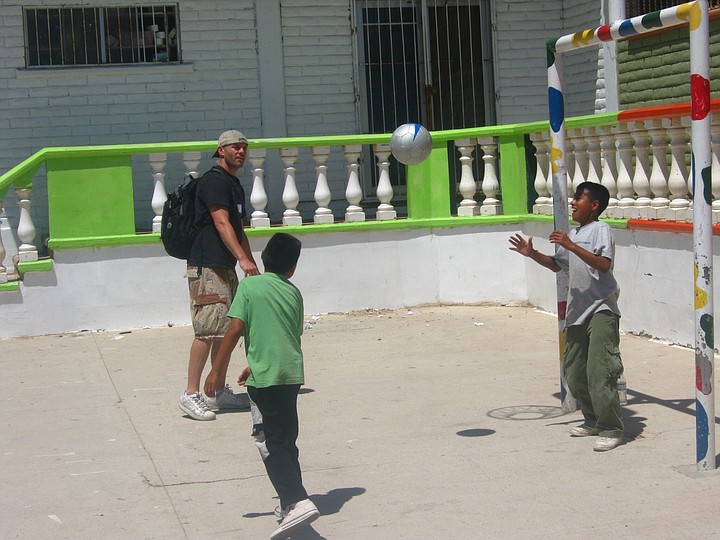
A woman who was on her first volunteer visit said her friend was set to come along too, but “chickened out.“ After her visit she said that she'd had an awesome time.
It helps to leave your preconceptions behind regarding what you’ve heard about border gang violence. I’ve never run into a problem on these trips, and they’ve been great fun. The kids are quite well behaved and seem to get along well. Corazon de Vida has never had an issue with keeping their volunteers safe. All you need to bring is your passport.
The bus originates in Los Angeles and also picks up volunteers in Orange County. San Diego has the best deal: local volunteers need to be there at 8:15, a little later than the 5:30 pickup L.A. volunteers are faced with. San Diegans are delivered back to their pickup in Mission Bay by 4. The 7-8 hours encompassing the trip is well spent – a fun way to spend a day and also do a bit of good. The smiles that you see remain with you for a long time.
At 2, when it was time to board the bus for the return, it seemed as if the four hours had flown by. As the bus pulled away toward the border crossing at Otay Mesa, my mind was swimming with images from the day. I looked forward to a future trip back to visit my new amigos.
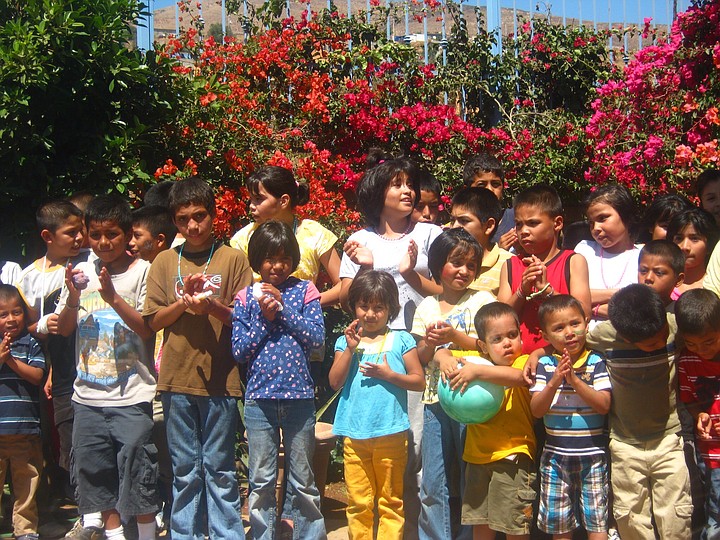
I subsequently arranged a backpack drive at the school where I work. The kids in Del Mar generously came through in donating their used backpacks to benefit the kids at the orphanage. A win-win all the way around!
For more information, a trip schedule, and an opportunity to register for a trip or sponsor a kid, visit corazondevida.eventbrite.com and their website, corazondevida.org.


When I returned to San Diego from India, I felt a bit out of sorts. I had been profoundly moved by my experiences there – particularly seeing the numerous street kids and visiting the Salaam Baalak Trust orphanage. I’d seen poverty before, but not on that scale.
I felt a strong urge to head right back over there on the first plane and help out at SBT for several months. Alas, this was just not in the cards economically.
Eventually, I discovered an organization that arranges volunteer field trips from Los Angeles, Orange County and San Diego to orphanages in Tijuana. Corazon de Vida Foundation, a non-profit based in Irvine, is dedicated to supporting the kids in fifteen orphanages in Baja California. Participation on a day visit costs $50, which covers the cost of the visit, including lunch and a craft activity.

On a sunny Saturday morning, a bus of about 40 volunteers headed from Southern California to Baja, en route to the Casa Hogar El Faro orphanage (left) in a rundown neighborhood in Tijuana. This was to be the first of about a half dozen trips I would make over the next few years. Many of the faces I saw as I boarded the bus in Mission Bay would be the same ones I’d see on future trips. For some of the volunteers, the monthly trips are a regular part of their routine. I and several other volunteers also chipped in some much-needed toiletries.
We were joined on the trip by Hilda Pacheco-Taylor, a former resident of a Baja orphanage who founded Corazon de Vida in 1994. George Perez gave up a career in computer science about a decade ago to dedicate himself to playing a major role in running the organization. He has accompanied the volunteers on each of my visits and, as the bus rolled toward the border, gave an informative, pep-talky presentation orienting the newbie volunteers on what they could expect.

As we walked along a dusty field toward the El Faro orphanage and its 50 or so children, I noticed a little boy running up to me. He asked if I would give him a piggyback ride. We hung out for most of the remainder of the day playing catch and other games, coloring, and taking selfies. The kids performed a little skit, and there was cake to celebrate the birthday of one of the kids. Most of the kids spoke only Spanish and most of the volunteers only English, but this was not an issue. Smiles and laughter abounded.
I’ve enjoyed each of my subsequent five visits to the CDV orphanages; two of them were to El Faro and three were to another home, the Hacienda. Regardless of which orphanage you sign up to go to, the routine is similar: A craft is set up, perhaps coloring or an art project. Some of the children prefer an outdoors activity such as tossing a football or playing soccer. The kids on swings practice their English by pleading “push push.” You can also bring books (preferably in Spanish) and read to the kids. If you go to Hacienda, a soccer game will inevitably break out. Someone may sing or play the guitar.

Mexico has no formal foster care system, and some of these children have been found living on the street. Many of them have parents but have been dropped off because of extreme hardship. The staff of three does its best, but is often overwhelmed dealing with such a large number of kids.
George offers a tour of the site for newcomers and demonstrates how Corazon de Vida plays a key role in providing the necessities of life to these children. According to Perez, the orphanage requires a minimum of $4,000 a month to sustain itself. Basic food costs are covered, but staff must scrounge and scrimp for funds for water, electricity, propane, medical, dental, housing repairs, education and daily emergencies. The Mexican government provides no support for these services, so they are entirely dependent on donor support. Corazon de Vida provides over $35,000 of support each month to the orphanages.

A woman who was on her first volunteer visit said her friend was set to come along too, but “chickened out.“ After her visit she said that she'd had an awesome time.
It helps to leave your preconceptions behind regarding what you’ve heard about border gang violence. I’ve never run into a problem on these trips, and they’ve been great fun. The kids are quite well behaved and seem to get along well. Corazon de Vida has never had an issue with keeping their volunteers safe. All you need to bring is your passport.
The bus originates in Los Angeles and also picks up volunteers in Orange County. San Diego has the best deal: local volunteers need to be there at 8:15, a little later than the 5:30 pickup L.A. volunteers are faced with. San Diegans are delivered back to their pickup in Mission Bay by 4. The 7-8 hours encompassing the trip is well spent – a fun way to spend a day and also do a bit of good. The smiles that you see remain with you for a long time.
At 2, when it was time to board the bus for the return, it seemed as if the four hours had flown by. As the bus pulled away toward the border crossing at Otay Mesa, my mind was swimming with images from the day. I looked forward to a future trip back to visit my new amigos.

I subsequently arranged a backpack drive at the school where I work. The kids in Del Mar generously came through in donating their used backpacks to benefit the kids at the orphanage. A win-win all the way around!
For more information, a trip schedule, and an opportunity to register for a trip or sponsor a kid, visit corazondevida.eventbrite.com and their website, corazondevida.org.
Comments